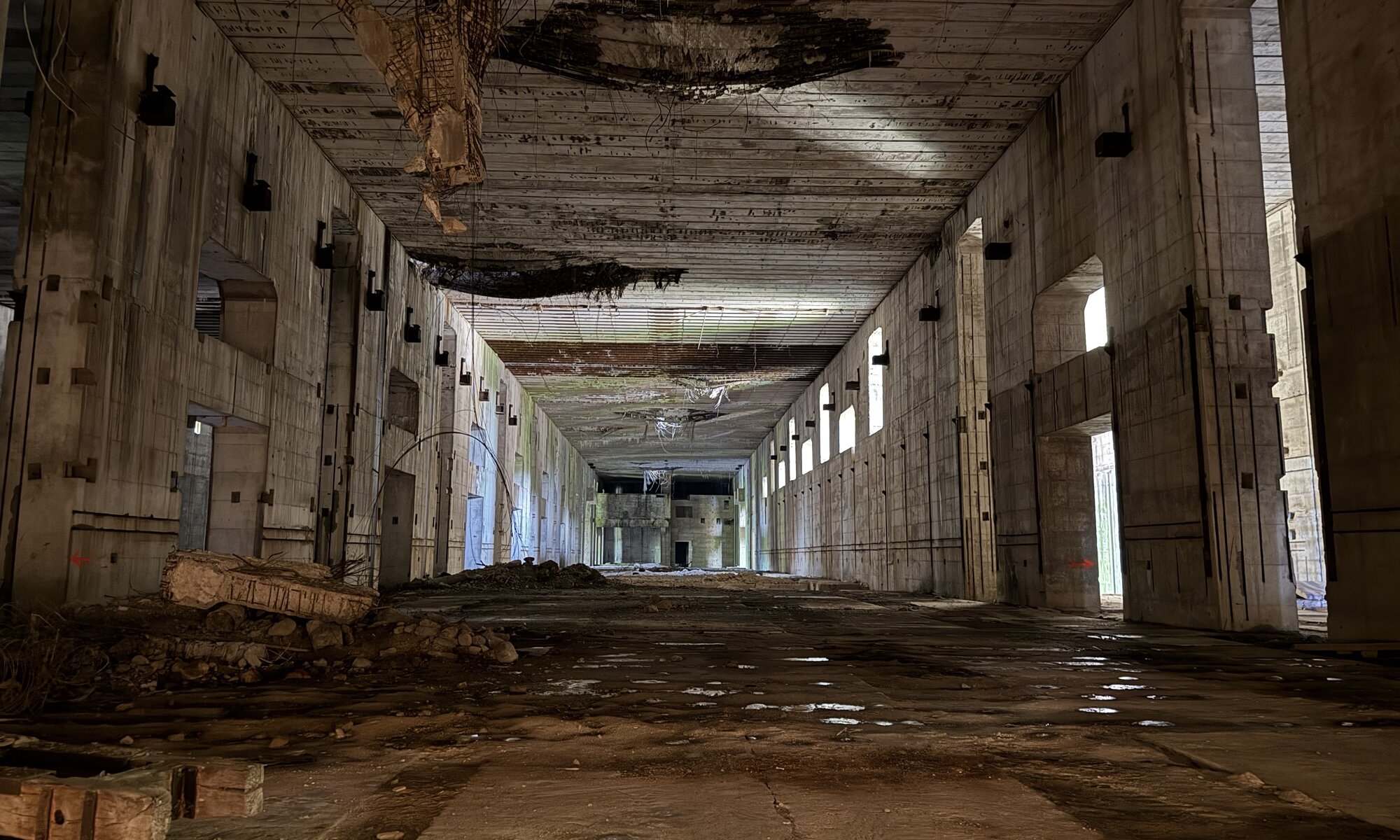Located near Farge on the banks of the river Weser just outside Bremen, Bunker Valentin is one of the largest above-ground bunkers in Europe and a haunting reminder of the final phase of World War II. Construction began in 1943, as the Nazi regime sought to protect its crucial submarine production from relentless Allied bombing. The plan was to assemble the advanced Type XXI submarines here, using innovative assembly-line techniques inside a massive, bomb-proof structure. The parts would have been preproduced in Hamburg and Danzig; the idea was to release a new U-Boot every 56 hours. The bunker stretches an astonishing 426 meters in length and 97 meters in width, with walls and a roof several meters thick – designed to withstand even the heaviest aerial attacks.
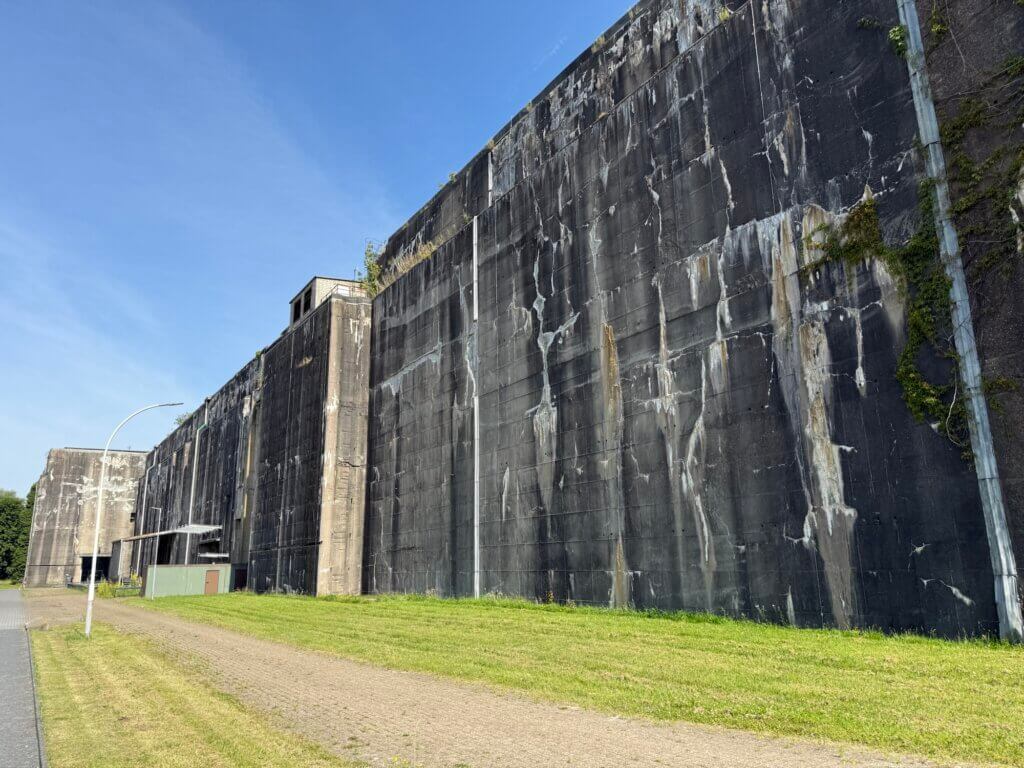
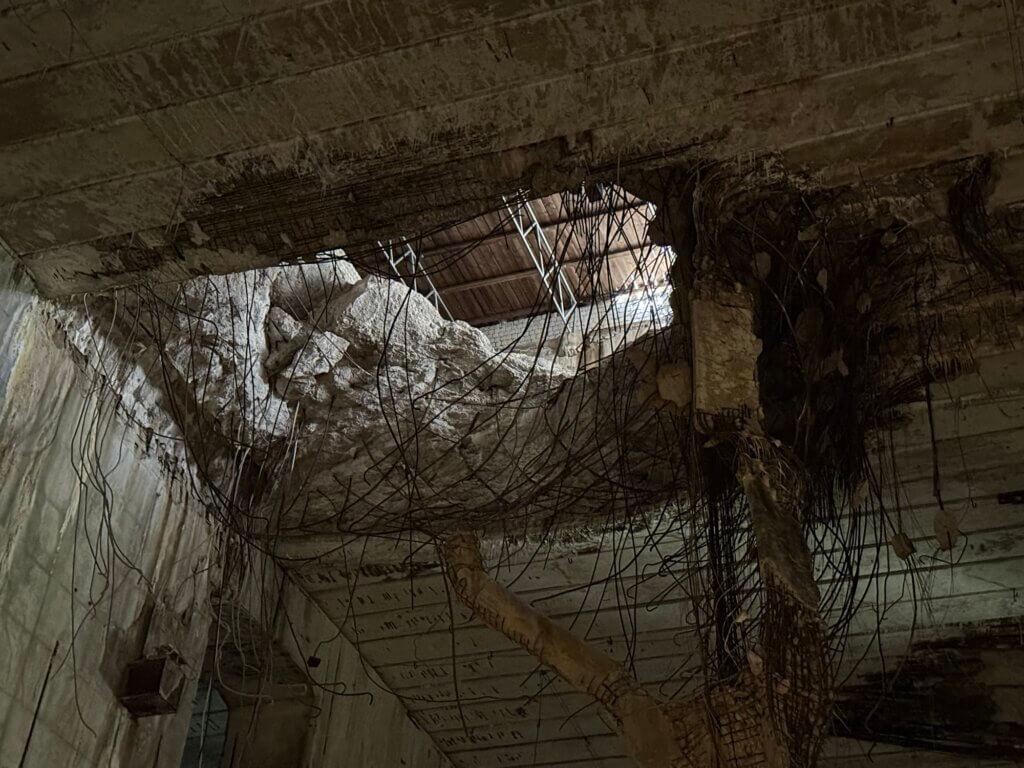
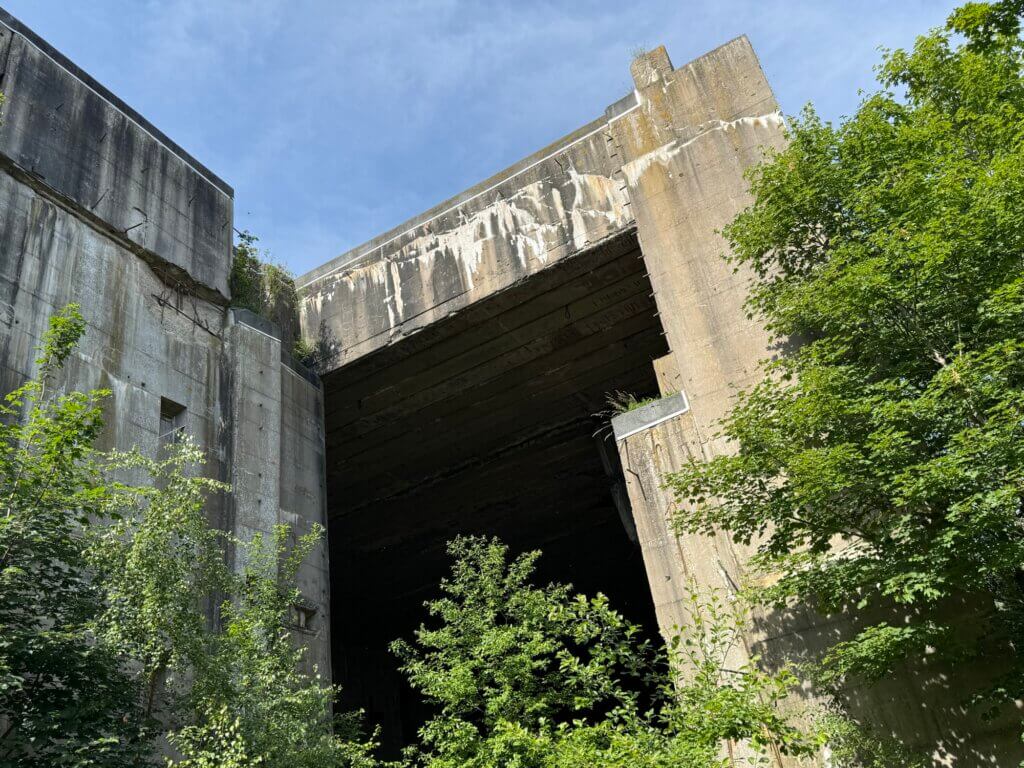
The human cost of this project was immense. Between 10,000 and 12,000 forced laborers, including prisoners of war and concentration camp inmates from across Europe, toiled under brutal conditions to build the bunker. Many were housed in nearby camps, such as the Bremen-Farge concentration camp (belonging to the KZ Neuengamme near Hamburg), and endured long shifts, malnutrition, and frequent abuse. It is estimated that at least 1,600 workers died during construction, though the true number may be higher, as many deaths went unrecorded.
Despite the enormous effort, Bunker Valentin was never completed or used for its intended purpose. In March 1945, as the war neared its end, the site was heavily bombed by the Royal Air Force (RAF) using massive “Tallboy” and “Grand Slam” bombs (the head of one of them can still be seen inside the bunker today). These attacks caused significant damage, leaving gaping holes in the still unfinished roof and halting any hope of submarine production. Just weeks later, the area was captured by advancing Allied forces, and the bunker was abandoned as a military project.
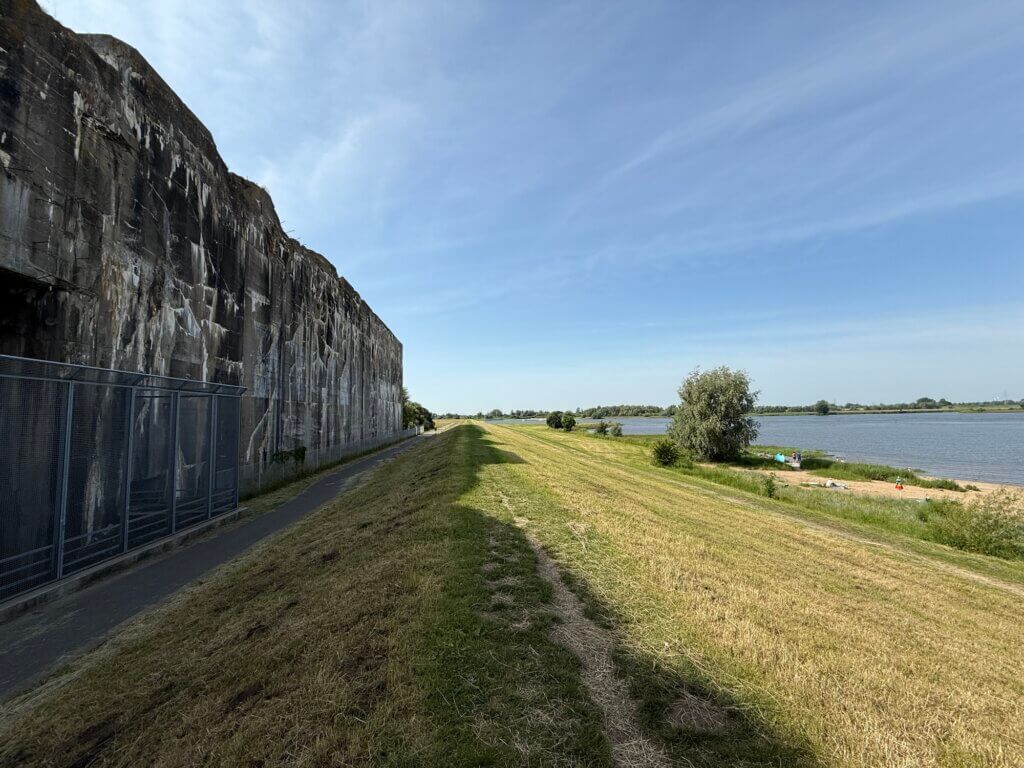
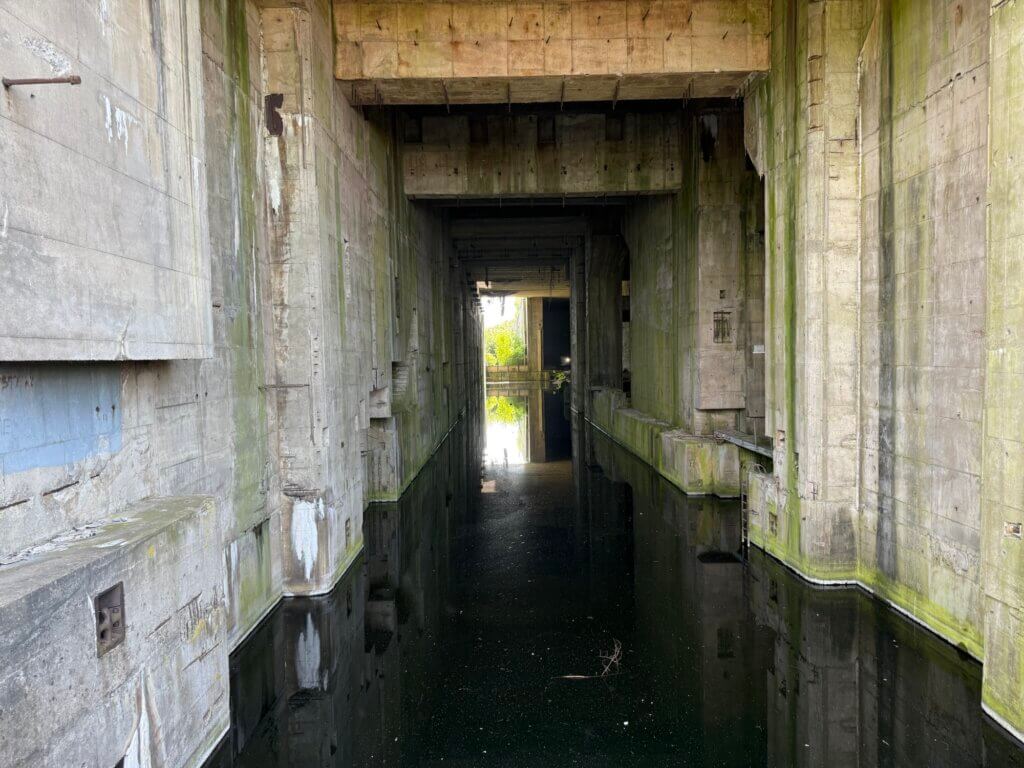
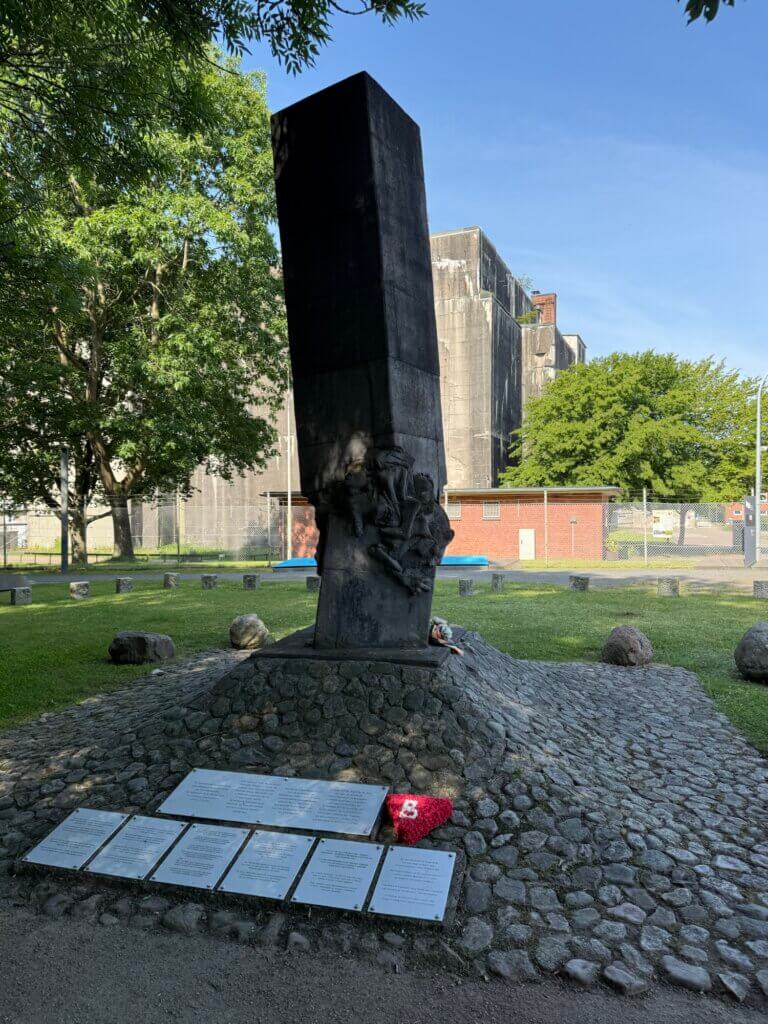
After the war, the bunker saw various uses, including as a storage facility for the German military. They even removed the words “No more war!” that have been painted by activists on the Weser-facing side of the bunker. The Bundeswehr saw this as a “too political” statement, but it should have just been consensus in society. For decades, the site was largely closed to the public, but persistent efforts by survivors and local activists eventually led to its transformation into a memorial. The first monument named Tod durch Arbeit had to be constructed outside the bunker area. But in 2015, the entire Bunker Valentin officially reopened as a place of remembrance, with exhibitions and information trails dedicated to the victims of forced labor and the wider context of Nazi war crimes.
Today, visitors to Bunker Valentin can explore both the vast, echoing interior and the surrounding grounds. The site features a memorial path, detailed bilingual information panels, and a visitor center with multimedia exhibits. It is now the Denkort Bunker Valentin, accessible for free, inviting people interested in history to learn more about the past and especially about forced labor and the victims. Many biographies have been researched and made visible. Remnants of wartime damage are still visible, including bomb craters and shattered concrete. The atmosphere is somber and reflective, offering a powerful insight into both the scale of Nazi ambitions and the suffering endured by those forced to build this colossal structure.
To reach the bunker, pick a train from Bremen to Bremen-Farge (or -Vegesack); bus 90 then takes you to Rekumer Siel which is very close to the Denkort Bunker Valentin.
Denkort Bunker Valentin
Rekumer Siel
Bremen
Germany
Loading map...


